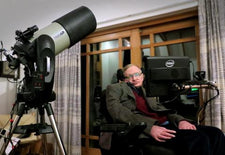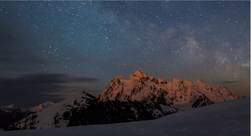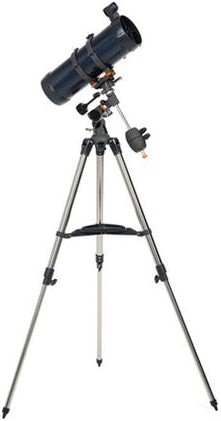Fighting Dew
May 4, 2015
You've waited weeks for a perfectly clear night and you're all geared up for a night of backyard observing. You've spent half an hour setting up your telescope and working out the perfect alignment. You begin your night with friends and fellow astronomers looking at favorite planets and deep sky objects - the night could not get any better. The conversations get more penetrating and before you know it you're asking whether the human race could possibly be alone in the universe.
Midnight quickly approaches and your telescope is covered in dew. That just won't do. It's time to pack it up.
Dew forms when a surface cools below the dewpoint of the air next to it. It's liquid water that condenses from water vapor contained in air that's become too cold to hold it. Once your telescope's optical surface cools enough for dew to form, your night is over. Wiping dew away will get you nowhere; it will just keep forming. The only answer is dew prevention - either by slowing down the cooling process or replacing the heat on the surface - or both.
Dew Shields - Slowing down the cooling process
 |
|
Meade LX200 GPS 10 Inch Schmidt Cassegrain Telescope equiped with #610 Dew Shield |
 |
|
Flexible Dew Shields by AstroZap for just about any size telescope. Easily rolls up for simple transport and storage. |
To slow down the cooling process, you can use a Dew Shield. This is a hollow tube that extends over the aperture of refractor telescopes or over the corrector plate of Schmidt-Cassegrain telescopes. Reflector telescopes do not require dew shields because the primary mirror is located at the bottom of the optical tube, and the tube acts as a natural dew shield.
Dew Shields essentially extend the tube of the telescope. This removes the optical surface from the cool ambient air and helps the mirror, lens or corrector plate to retain its heat. This delays dew formation on optical surfaces and prolongs your viewing session.
Dew Shields are available in different sizes to match the objective size of your telescope and are available in different materials. Aluminum dew shields are painted to match your telescope's tube color and give a seamless look. Shields also are available in flexible plastic material that can "roll up" for easy transportation and storage. Both the color-matched aluminum shields and the non-matched flexible plastic attachments serve the same purpose, to extend the tube away from the optical surface and slow formation of dew.
A Dew Shield will only slow down the dew formation process, though; it won't stop it. A dew shield will often hold off the dewing process long enough. But sometimes it won't. Then you'll want something more.
Dew Heaters - Eliminate Dew for your entire viewing session
 |
|
A Dew Heater Strip wraps around your telescope over the exposed optics. A Dew Heater strip is powered by a Dew Controller or Power Source. (below) |
 |
|
To get power to your Dew Heater Strip, you will need a power source. A single dew heater power source (left) or a Dew Controller for heat regulation and multiple heater strips (right) |
You have learned how a Dew Shield can prolong the formation of dew. But sometimes that's just not enough. Your next option is to heat your optical components with a Dew Heater.
To heat your optical components you need a dew heating system. A dew heating system is basically two parts - a Dew Heater Strip and a Power Source. A Dew Heater Strip wraps around your telescope over the point your looking to protect from dew. Inside of the heater strip is an element that distributes heat into the strip. The strip is held in place by elastic/velcro attachments. Attached to the heater strip is an RCA output jack that will plug into a Dew Heater power source or Dew Heater Controller.
A power source can be as simple as a DC power plug that is designed to power one Heater Strip. A more efficient Dew Heater Controller will allow you to vary the heat level and power more than one heater strip. Some telescope set-up's will have multiple heating strips connected at the objective lens, at the eyepiece or diagonal, and over the finderscope. You can even run a heater strip to a second eyepiece to have it ready and free from dew.
Dew Heater Strips are available from Kendrick, AstroZap, and Astro Engineering in many available sizes. Our most popular Dew Controller's are the Dew Heater Adaper from AstroZap and the Standard Dew Controller from Kendrick. For more features such as 100% digital operation and programmable outputs, check out the DigiFire series Dew Controllers by Kendrick.
Best of both worlds - a Heated Dew Shield
 |
|
A Dew Shield with a built in Heater Strip by AstroZap. |
 |
|
Flexible heated dew shield on a Meade LX200 GPS telescope. |
AstroZap has been making flexible heated dew shields for many years. This solution will give you the ultimate in dew prevention. A heated dew shield will still require the use of a power source such as a heater controller.
If you're not thrilled about a flexible dew shield and want to have an aluminum, paint matching dew shield, you can still use a dew heating strip over the dew shield above the area your trying to protect from dew.
Don't allow dew to ruin another night of viewing. Good viewing nights can be scarce and you can easily go weeks with cloudy weather. When that clear night comes along, your dew prevention equipment will ensure you make the most of every moment with your telescope. When shopping for your new telescope, allow room in your budget for anti-dewing equipment.
We currently offer specialized Anti-Dewing products from the leaders AstroZap, Kendrick and Astro Engineering. Dew Shields are also available from Meade and Celestron.



